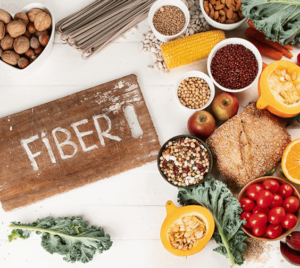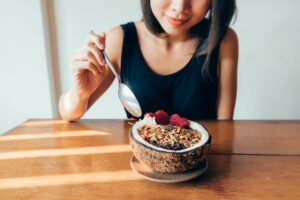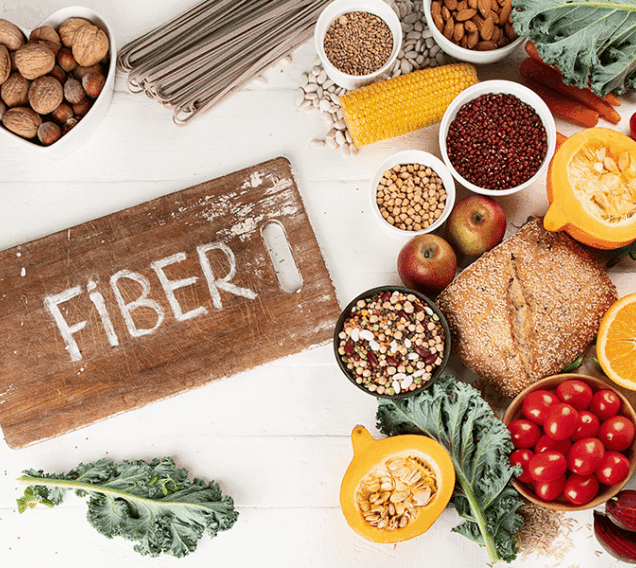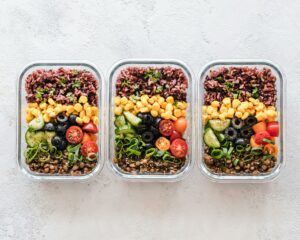
Fiber is a nutrition superstar, playing a crucial role in digestive health. It acts like a broom, sweeping through your digestive system and keeping things moving smoothly. Additionally, studies have shown that fiber may help lower your risk of chronic diseases such as heart disease, type 2 diabetes, and even some types of cancer. With so many benefits, it’s no wonder that experts recommend including enough fiber in your daily diet.
Gut Feeling: A Fiber Fiesta for Digestion
Fiber is like a broom for your digestive system. Insoluble fiber adds bulk to stool, promoting smooth passage and preventing constipation. Soluble fiber, on the other hand, acts like a sponge, absorbing water and forming a gel-like substance that keeps you feeling fuller for longer. This can aid in weight management and reduce cravings.
The recommended daily fiber intake depends on your age and sex. Here’s a general guideline:
- Women under 50: 25 to 28 grams per day
- Men under 50: 31 to 34 grams per day
- Women 51 and older: 22 grams per day
- Men 51 and older: 28 grams per day
It’s important to note that these are averages. If you have any underlying health conditions or concerns, it’s always best to consult a registered dietitian or healthcare professional for personalized advice on your ideal fiber intake.
Beyond Regularity: A Fiber Fortress for Health
Fiber’s benefits extend far beyond the digestive tract. Studies suggest that a high-fiber diet can:
- Lower your risk of heart disease: Soluble fiber helps lower LDL (“bad”) cholesterol, a key culprit in heart woes.
- Promote healthy blood sugar: Fiber can help regulate blood sugar levels, making it beneficial for those with diabetes or prediabetes.
- Support a healthy weight: Fiber keeps you full for longer, potentially reducing calorie intake and aiding in weight management.
- Feed your gut friends: Fiber acts as a prebiotic, nourishing the good bacteria in your gut microbiome, which plays a vital role in digestion, immunity, and overall health.
- Reduce cancer risk: Some studies suggest a link between high-fiber diets and a lower risk of certain cancers, particularly colorectal cancer.

Adding Fiber to Your Plate is Easier Than You Think!
Here’s some good news: incorporating fiber into your diet is simple! Here are some delicious ways to boost your fiber intake:
- Load up on fruits and vegetables: Most fruits and vegetables are naturally high in fiber.
- Choose whole grains over refined grains: Opt for brown rice, quinoa, and whole-wheat bread instead of white varieties.
- Incorporate legumes: Beans, lentils, and peas are excellent sources of fiber and protein.
- Don’t forget nuts and seeds: Sprinkle them on salads, yogurt, or oatmeal for an added fiber and healthy fat boost.
Start Slow and Listen to Your Body
While increasing fiber intake is a great idea, it’s important to introduce it gradually. A sudden surge can lead to bloating and gas. Drink plenty of water alongside your fiber-rich meals to aid digestion. Remember, even small changes can make a big difference. So, start incorporating more fiber-rich options into your diet and feel the positive impact on your health and well-being!








